- Clone
- Poly4064 (See other available formats)
- Regulatory Status
- RUO
- Isotype
- Donkey Polyclonal Ig
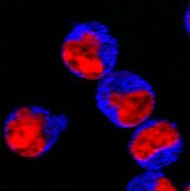
-

293E cells were stained by purified anti-Tubulin-gamma (clone Poly6209) and labeled with BV421 anti-rabbit-IgG (clone Poly4064 (blue)). Nuclei were stained with propidium iodide (red).
| Cat # | Size | Price | Quantity Check Availability | ||
|---|---|---|---|---|---|
| 406410 | 125 µL | $204.00 | |||
This polyclonal donkey anti-rabbit IgG antibody reacts with the heavy chains of rabbit IgG and with the light chains common to most rabbit immunoglobulins. No cross-reactivity has been detected against non-immunoglobulin serum proteins. This antibody has been solid-phase absorbed to ensure minimal cross-reaction with rat, human, bovine, horse, and mouse immunoglobulins, but it may cross-react with other subclasses of rabbit immunoglobulins.
Product Details
- Verified Reactivity
- Rabbit
- Antibody Type
- Polyclonal
- Host Species
- Donkey
- Formulation
- Phosphate-buffered solution, pH 7.2, containing 0.09% sodium azide and BSA (origin USA).
- Preparation
- The antibody was purified by affinity chromatography and conjugated with Brilliant Violet 421™ under optimal conditions.
- Concentration
- Lot-specific (to obtain lot-specific concentration and expiration, please enter the lot number in our Certificate of Analysis online tool.)
- Storage & Handling
- The antibody solution should be stored undiluted between 2°C and 8°C, and protected from prolonged exposure to light. Do not freeze.
- Application
-
ICC - Quality tested
FC - Reported in the literature, not verified in house - Recommended Usage
-
Each lot of this antibody is quality control tested by immunocytochemistry. For immunocytochemistry, the suggested usage of this reagent is a 1:20-1:100 dilution. It is recommended that the reagent be titrated for optimal performance for each application.
Brilliant Violet 421™ excites at 405 nm and emits at 421 nm. The standard bandpass filter 450/50 nm is recommended for detection. Brilliant Violet 421™ is a trademark of Sirigen Group Ltd.
Learn more about Brilliant Violet™.
This product is subject to proprietary rights of Sirigen Inc. and is made and sold under license from Sirigen Inc. The purchase of this product conveys to the buyer a non-transferable right to use the purchased product for research purposes only. This product may not be resold or incorporated in any manner into another product for resale. Any use for therapeutics or diagnostics is strictly prohibited. This product is covered by U.S. Patent(s), pending patent applications and foreign equivalents. - Excitation Laser
-
Violet Laser (405 nm)
- Application Notes
-
This conjugated polyclonal donkey anti-rabbit IgG antibody is useful for immunofluorescent staining for flow cytometry, or microscopy.
- Product Citations
-
- RRID
-
AB_10897810 (BioLegend Cat. No. 406410)
Other Formats
View All Rabbit IgG Reagents Request Custom Conjugation| Description | Clone | Applications |
|---|---|---|
| HRP Donkey anti-rabbit IgG (minimal x-reactivity) | Poly4064 | ELISA,IHC,WB |
| Cyanine3 Donkey anti-rabbit IgG (minimal x-reactivity) | Poly4064 | ICC |
| FITC Donkey anti-rabbit IgG (minimal x-reactivity) | Poly4064 | ICC,FC |
| Brilliant Violet 421™ Donkey anti-rabbit IgG (minimal x-reactivity) | Poly4064 | ICC,FC |
| DyLight™ 488 Donkey anti-rabbit IgG (minimal x-reactivity) | Poly4064 | ICC,FC |
| DyLight™ 649 Donkey anti-rabbit IgG (minimal x-reactivity) | Poly4064 | ICC,FC |
| Alexa Fluor® 647 Donkey anti-rabbit IgG (minimal x-reactivity) | Poly4064 | FC |
| Alexa Fluor® 488 Donkey anti-rabbit IgG (minimal x-reactivity) | Poly4064 | FC |
| PE Donkey anti-rabbit IgG (minimal x-reactivity) | Poly4064 | FC |
| Brilliant Violet 510™ Donkey anti-rabbit IgG (minimal x-reactivity) | Poly4064 | FC |
| Alexa Fluor® 594 Donkey anti-rabbit IgG (minimal x-reactivity) | Poly4064 | ICC |
| Alexa Fluor® 555 Donkey anti-rabbit IgG (minimal x-reactivity) | Poly4064 | ICC |
Compare Data Across All Formats
This data display is provided for general comparisons between formats.
Your actual data may vary due to variations in samples, target cells, instruments and their settings, staining conditions, and other factors.
If you need assistance with selecting the best format contact our expert technical support team.
-
HRP Donkey anti-rabbit IgG (minimal x-reactivity)
-
Cyanine3 Donkey anti-rabbit IgG (minimal x-reactivity)
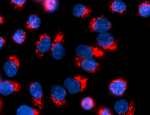
HeLa cells were fixed with ice cold methanol for six minutes... -
FITC Donkey anti-rabbit IgG (minimal x-reactivity)
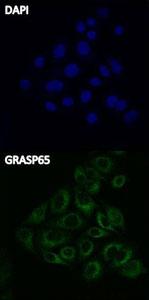
Hela cells were stained with anti-GRASP65 (Poly6210) and sec... -
Brilliant Violet 421™ Donkey anti-rabbit IgG (minimal x-reactivity)
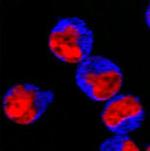
293E cells were stained by purified anti-Tubulin-gamma (clon... -
DyLight™ 488 Donkey anti-rabbit IgG (minimal x-reactivity)
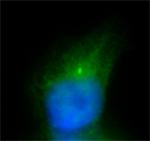
293T cells were stained with anti-Tubulin-γ and secondarily ... -
DyLight™ 649 Donkey anti-rabbit IgG (minimal x-reactivity)
-
Alexa Fluor® 647 Donkey anti-rabbit IgG (minimal x-reactivity)
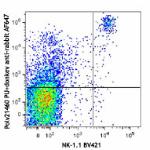
C57/BL6 splenocytes were stained with NK-1.1 Brilliant Viole... -
Alexa Fluor® 488 Donkey anti-rabbit IgG (minimal x-reactivity)

C57BL/6 splenocytes were stained with NK-1.1 Brilliant Viole... -
PE Donkey anti-rabbit IgG (minimal x-reactivity)
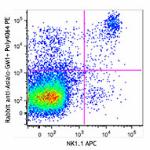
C57BL/6 splenocytes were stained with NK-1.1 APC and purifie... -
Brilliant Violet 510™ Donkey anti-rabbit IgG (minimal x-reactivity)

C57BL/6 splenocytes were stained with NK-1.1 APC and purifie... -
Alexa Fluor® 594 Donkey anti-rabbit IgG (minimal x-reactivity)
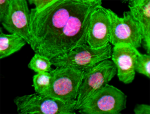
HeLa cells were fixed with 2% paraformaldehyde (PFA) for 10 ... -
Alexa Fluor® 555 Donkey anti-rabbit IgG (minimal x-reactivity)
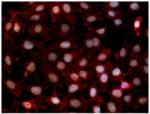
HeLa cells were fixed with 1% paraformaldehyde for ten minut...
